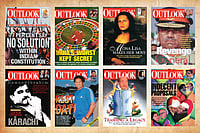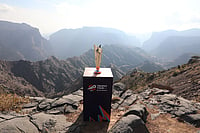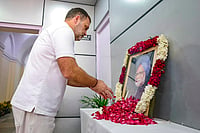It recounts the story of their triumphant supremacy during the reign of the Achaemenian, Parthian and Sasanian dynasties, who, between 550 BCE and 632 CE established Zoroastrianism as the faith of their empires, evidence of which can still be seen in the magnificent relics of the palaces and bas reliefs, the coinageand imperial seals of that era.
It also chronicles the terrible tale of their subsequent persecution by the seventh century Arab conquerors who demolished their temples, defiled their sacred fires, burnt their holybooks, banished them to ghettos in the city outskirts, compelled them to wear clay coloured clothes with a distinctive white or yellow patch to signify their belief, imposed jiziya or non-believers tax on them, forbade them toengage in any skilled trade or profession, forced them to walk on foot and to build houses the roof of which a standing Muslim could reach with his hands; these houses also could not have the badgirs or cooling towers so critical to survival in the grueling heat of the desert.
More heartless still-- they were not allowed to step out when it rained in the parched desert, lest they pollute the water. That was not all: the murderer of a Zoroastrian did not face capital punishment but could get away by paying a nominal fine, a defector to the Islamic faith was accorded the right to inherit all the property of his immediate as well as extendedfamily. It was this brutal onslaught on their lives and beliefs that prompted the first Zoroastrians to seek political refuge in 936 CE in Sanjan in Gujarat.
But those are nuggets any mining of history books would yield. Pick up this book for the illuminating essay on Zoroasrtianbelief by Jamshed K Choksy which helps you understand how a community mandated tenets like unfaltering courage, truth,right belief and action, the concept of asha or optimism, into their religion and used their belief to achieve internationalprominence as progressive cosmopolitan traders, shipbuilders, educationists and philanthropists.
Pick it up for the knowledge nuggets it offers about the community: the first sacred writings were written in gold ink on1200 cow hides, that the Parsis as they came to be called here celebrate the "birthday of the fire" or Atash nu Parab and alsoworship water as the goddess Anahita. The other revelations are equally fascinating: that a Parsi princess, a daughter of Yazdegird the Third married, an Udaipurroyal and therefore was an ancestress of the blue blood Sisodias; that the
first Parsis arrived on British shores as early as the 1790s.
It was Furdoonji Marzaban who started the first Indian newspaper Bombay Samachar in 1822; as early as 1881 Parsi theater impresario Dadi Patel took productions (that in terms of spectacle, colour, story line and presentation were the
precursors of popular Indian cinema) like Hatim Bin Tai on tour overseas to Singapore, Burma and England and was the first person to introduce womenactors on stage. Read how the likes of Ardeshir Godrej built business empires by the ingenious expedient of making bathing soaps using vegetableoils rather than animal fat!
Most of all, pick up this book for the feast of sumptuous archival visuals it lays out for you: of biblical looking Zoroastriansettlers in 19th century Yazd in Iran, the innumerable grainy sepia toned pictures, oil portraits, impressions of a time and apeople fast fading into the margins of history, of probably the first ever pictures of Parsi funeral and fire-worshipceremonies.
The gourmet and aesthete looking for the food, textile, jewellery and interiors experience will not be disappointed packed asthe volume is with textual detail and visual splendour: pictures of garas, jashans, navjot, lagans abound.
One lone carp, though: the book could have been better edited. The galaxy of writers tend to painfully repeat points laboured upon by others in thevolume. Also, a suggestion: at seven and a half kg, this Rs 7,500 book is no handy ready-reckoner for the Parsi-ana enthusiast.
Maybe the publishers ought to throw in a folding lectern to park the book as part of the whole package.
(A slightly edited version of this review appears in the print magazine)


























